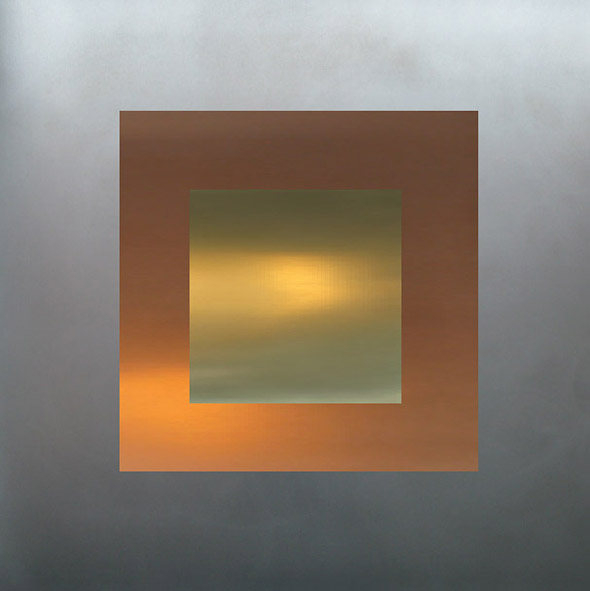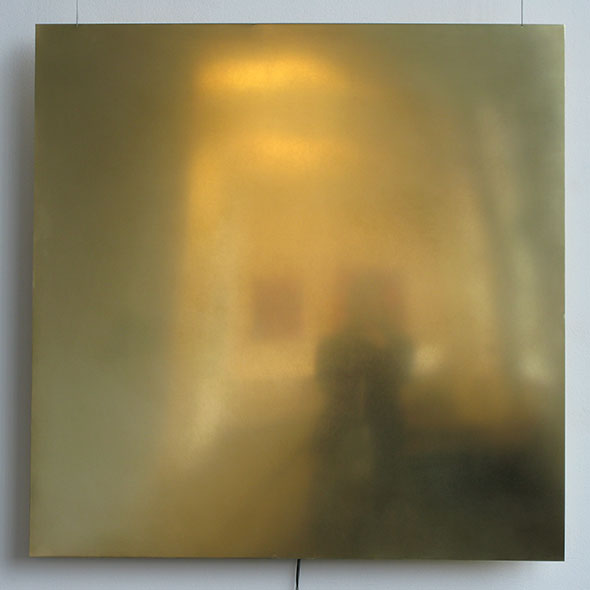
P H O N U R G I A M E T A L L I S
One series of three unique works of copper, iron & brass, sensors and contact speakers
Jacob Kirkegaard © 2009
Three freely hanging metal plates
Iron, Copper, Brass
Each 100 x 100 x 01 cm
Piezo sensor and contact speaker attached on rear side of each plate
Amplifying and mirroring their subtle and naturally occurring vibrations
Evoking the characteristic resonant frequencies of each type of metal
.
|
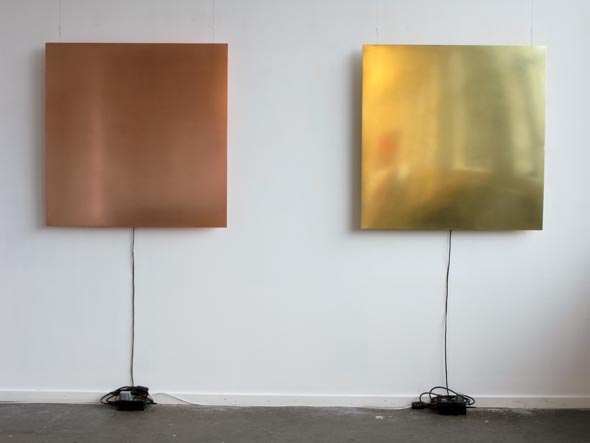
Cu (Copper plate) and CuZn (Brass plate). Each 100 x 100 x 0.10 cm
Jacob Kirkegaard © 2009
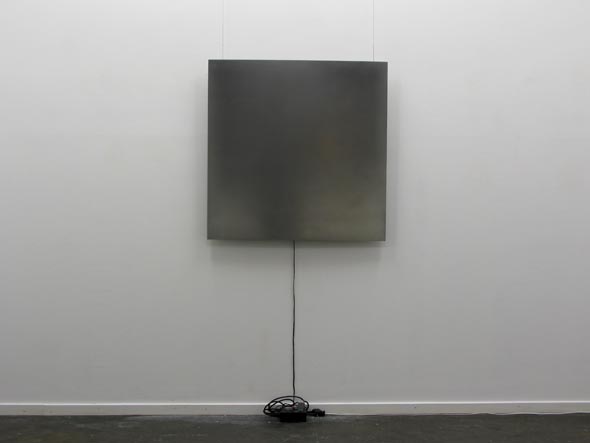
Fe (Iron plate). 100 x 100 x 0.10 cm
Jacob Kirkegaard © 2009
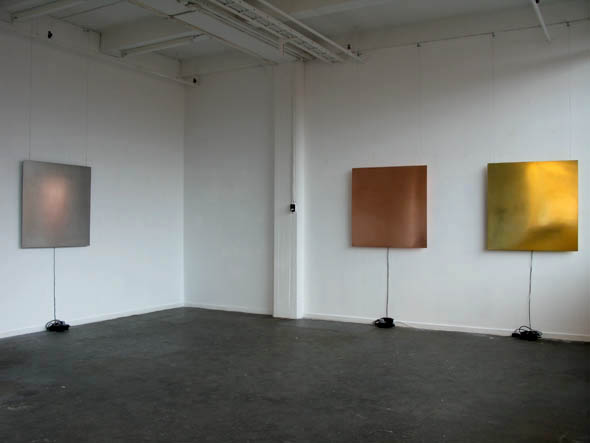
PHONURGUA METALLIS (Exhibition text, 2009)
The creation of this work was inspired by an eminent figure in the history of sound studies, Athanasius Kircher and his experimental approaches to exploring and visually manifesting sound generated from matter in motion
In his book "Phonurgia Nova" ("new ways of sound production"), the Jesuit physician and scientist Athanasius Kircher (1602 - 1680) analyzes and illustrates how different "humors" or temperaments are affected by musical vibrations: Each matter and each person will be "moved" differently by the same music, according to their different resonant characteristics. Kircher “proved” this in an experiment with three glass goblets, each filled with a different liquid (water, wine fx.) representing the character of one of the three "humors". When a moistened finger was rubbed around the rims of the glasses, producing a musical tone, each fluid was set in a different degree of motion
Jacob Kirkegaard's PHONURGIA METALLIS ("sound production through metals") takes up this proposition of Kircher's. Three metal plates (copper, brass, and iron) are caused to vibrate through their own subtle resonant activity, which is being amplified and played back simultaneously. Even though the three plates are of exactly the same size they turn out to be "affected" in different ways, for each matter has its own resonant humor
